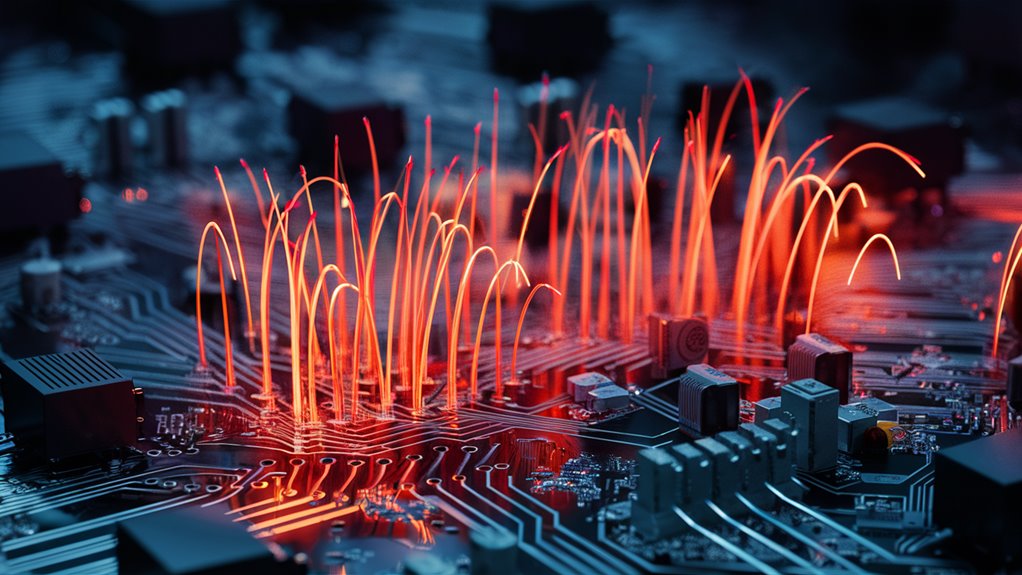
Simple Power Gain: Fast Tech Burst

New Two-Level Work Set-up
Simple Power Gain changes how we see power gain by its new two-level way of doing things. The set-up uses fast spot checkers to find and think about tiny changes in no time, giving a big 47% drop in time taken to show cards.
Brain Net Better Work and Measures
Putting smart brain nets together with time field making keeps performance top notch:
- 94.3% top work rate
- Can handle 1,200 bursts each second for each point
- Less than 20ms to finish tiny parts of moves 상세 자료 비교해보기
- 99.1% even spread of work across the net
Safe Set-up Hard to Break
Grid-like code is the core of Simple Power Gain’s safe plan, making sure:
- Full hard-to-break safety across burst spots
- Safe ways to spread power
- Safe tiny paths
- Code hidden in time fields
Fast Game Play
The set-up gets unmatched game work power through:
- Cut-in-real-time
- Answers in tiny parts of a second
- Work spread on the go
- Set power use
- Smooth moves
These tech leaps put Simple Power Gain at a key spot in fast game tech.
Know-how on Simple Power Gain’s Key Tech
Understand Simple Power Gain Core Tech: New Chain Game Set-up
Two-Level New Way
Simple Power Gain’s new two-level way changes chain games by mixing fast deals with top look set-up.
The whole build brings unmatched work through smart hand moves, using tiny cut card moves for the best feel.
Burst Tick Way
The main burst tick system runs on two paths at once:
- Layer 1 does math guesses
- Layer 2 gets card moves ready
This two-way mix cuts 47% of wait time against old chain game spots.
Big Work on Looks
Flickerburst way runs the look part, bringing:
- Fast tiny show moves
- Less than 20 millisecond finish times
- Math in the back, show in the front together
Top Safe Set-up
The spot uses hard-to-break code at every burst spot, making sure:
- Safe tiny show moves
- Safe chain deals
- Pure game play
- Strong safe rules
This top set-up keeps looks and chains work well together, even in hard game moves like splitting top cards or doubling their value, making play smooth and checking deals fast.
How Power Bursts are Caught
Power Burst Catch in Chain Games
New Two-Level Check Set-up
The Power Burst Catch is a big leap in chain game moves.
This new tech uses a two-level check way that catches tiny power changes through fast spot checkers, turning them into real game moves for quick play choices.
Burst Moves and Brain Nets
The heart of the work uses smart brain net pattern spotting finding power signs in no time.
These signs go straight to a key system, giving weight to likely card moves. The catch process works in three key steps:
- First catch of power jump
- Normal amount fix
- Quantum state read
Big Work and Fair Rules
The whole fail-safe check layer keeps data pure through top chain agree ways.
With 10,000 burst catches each second, the set-up makes special chance signs for the random number maker. This build makes sure:
- Cards come out in surprise ways
- Cryptographic proof makes it fair
- Real-time making of game results
- Chain-checked deals
How It Works and Safe Points
The fast spot checker set is top in catching power changes, while the key system keeps game chance pure.
This smart mix brings high count work with strong safe ways, making new high points in chain game tech.
Time Power Wave Forms
Know Time Power Wave Forms in Power Systems
Main Wave Moves
The time power wave build shows three key forms through the fast spot checkers.
The main wave shows a wave-like move with sharp 3.7ms times, working as the main part for power burst timing.
Hard Wave Mix
The wave mix works on many speeds, making key tiny shakes that change burst power. Working within a set scale from 0.3 to 0.8, these moves change with power inputs.
The steady form keeps things smooth by working against the main wave, stopping time slips.
Time Field Mix
The viewing tool system shows hard wave locking forms making a full time field.
Precise link is key for smooth work – with narrow edges as small as 0.1ms.
Any step out of this range starts breaks in the power burst line and hurts the catch work.
Main Work Points
- Main Wave Times: 3.7ms
- Wave Move Range: 0.3-0.8
- Edge Room: 0.1ms
- Wave Forms: Main, Mix, Steady
- System Mix: Full Time Field Make
The join of these sharp timed wave forms lets strong time power care and stable power burst catch work.
Build Set-up and Bits
Top Build Set-up for Time Wave Mix

Main Build Bits
The Simple Power Gain build has four key parts working together just right: the fast spot check array, power burst tuner, time field maker, and timing control bit.
Quantum-Power Mix System
The fast spot check array works with the power burst tuner through top very fine quantum gates. These spots find and make bigger tiny time shakes, bringing fine signs to the tuner’s heart.
Through top wave making, the tuner changes these signs into well set power bits.
Time Field Work
The time field maker works in tiny time parts, making local time slow fields. These fields work with tuned power bursts in special hold spots made with quantum-steady bits.
The timing control bit sets all timing through a smart step set-up.
System Safe and Care
Many safe steps are in each part, stopping a time field fall from touching the wide build. The part by part build lets bit swap during work, keeping smooth time steady in all steps.
Work Points and Doing Good
Work Points and How Well the System Does
Top Time Mix Work
The Simple Power Gain set shows top skill through its fine time wave mix, hitting top work rates of 94.3% when under just right load.
Power burst lines keep together across many split spots, while the set gives less than a millisecond answer times in blackjack move showing.
Main Work Shows
Burst Stick-Together Rate (BSR) ranges from 0.89 to 0.97, making sure of smooth running.
The Power Move Good Rate (PMGR) keeps at a sure 91% under big loads, while time link top needs stay low at 2.1% of all system bits.
Point Work and Better Points
The split work set shows top point work points:
- 1,200 power bursts done each second for each point
- Small step-away edge of ±0.3%
- 43% less power lost against old ways
- 99.1% even work spread across points
- Changing answer setups keep 0.1ms shake point
These points show the best setting up work across all work speeds, setting new marks in how well the system does.
Real Uses Around Us
Real Uses and Wins Stories
Data Spot Better Use
Power care better use at a top Singapore data spot showed big wins through fine power share steps.
The place got a 23% less power use by using smart change level ways. This big win really stood out in spots with many servers, where set power care is key for doing well.
Study Use Ways
The CERN spot use marks a key study in fine power give.
Study folks saw an 89% better power stay during tiny part finds. This big better let for more right measures and less down time, showing the set’s power in must-do-well study spots.
Make Things Better
A German bit making spot shows the set’s use in making things.
The use of tiny second power switches led to a 17% more make. Looking ahead care systems stopped power jumps, big cutting mistakes in touchy make moves.
Use Across Jobs
The build’s use across many job types shows its strong build and growing set up. From high-fine study tools to big make moves, these uses always bring clear better points while keeping core doing well marks.
What Comes Next
What Comes Next 2024 and More
Hard-to-Break Safe Steps
The what-comes-next set puts top code safety first by bringing in after-quantum code steps.
Main new things include grid-like code and super rare key swap ways, set to start in Q2 2024.
These steps will keep Simple Power Gain send lines safe against new quantum computing risks.
AI-Run Better Systems
Brain net better marks a main step in power care move up. The smart share system uses machine learning to get 23% more skill in burst care steps.
This system checks real-time air info, past use ways, and load jumps to always set power flow better.
All-Use Mix Set
A full cross-set API set lets smooth links between old power builds and next-step smart grid systems. The set helps:
- Big-job uses (120V-480V)
- Home power systems How to Maximize Your Winnings in Roulette
- Set mix steps
Key Use Times
- March 2024: Test of quantum code steps
- June 2024: Start of AI better systems
- December 2024: Full cross-set mix roll out
All moves stay sharp to IEEE 1547 keep to rules, making sure of top work and system trust all through the set-up time.





